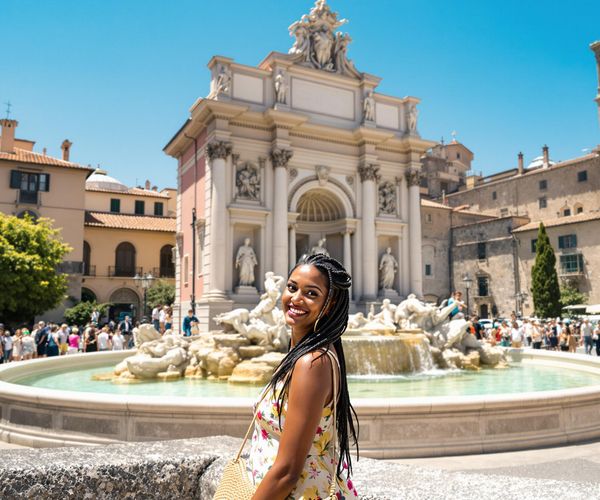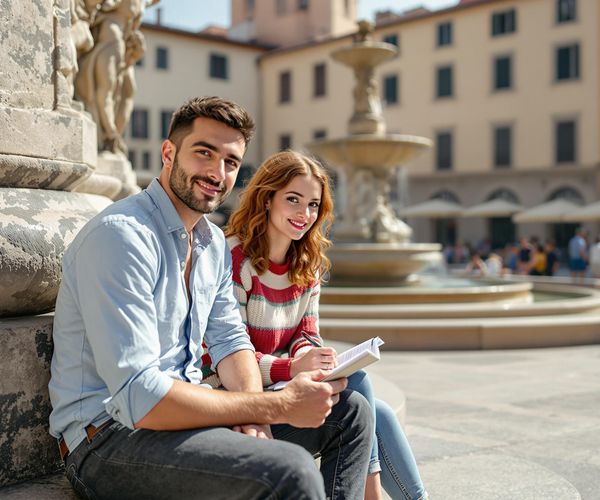
Assisi: The Heartbeat of Spiritual Italy
Discover the spiritual heart of Italy in Assisi, a medieval town rich in history, art, and natural beauty, where every corner tells a story.
Nestled in the rolling hills of Umbria, Assisi is a charming town that promises a serene and soul-stirring experience. Known worldwide as the birthplace of St. Francis, this medieval town offers a rich tapestry of history, spirituality, and natural beauty. The Basilica of St. Francis, a UNESCO World Heritage site, is a must-visit, adorned with stunning frescoes by Giotto and Cimabue that depict the life of the saint. Wander through the narrow, cobblestone streets and discover hidden gems such as the Roman Temple of Minerva, now a church, and the Rocca Maggiore, a majestic fortress offering panoramic views of the Umbrian countryside. Assisi's peaceful atmosphere is perfect for leisurely strolls, allowing you to soak in its timeless charm. Apart from its religious significance, Assisi is also a haven for art and history lovers. The town's museums, such as the Pinacoteca Comunale, house exquisite collections of medieval and Renaissance art. The lush landscapes surrounding Assisi are ideal for hiking and exploring, with trails that lead to breathtaking vistas and serene picnic spots. Whether you're seeking spiritual enrichment or simply a tranquil retreat, Assisi offers a unique blend of culture, history, and natural beauty that will leave you enchanted.
Local tips in Assisi
- Visit early in the morning to enjoy the Basilica of St. Francis with fewer crowds.
- Try local Umbrian cuisine at family-run trattorias for an authentic experience.
- Wear comfortable shoes as Assisi's streets are cobblestone and can be steep.
- Check the calendar for religious festivals like the Feast of St. Francis on October 4th.
- Take a guided tour to fully appreciate the art and history of the town.
Assisi: The Heartbeat of Spiritual Italy
Nestled in the rolling hills of Umbria, Assisi is a charming town that promises a serene and soul-stirring experience. Known worldwide as the birthplace of St. Francis, this medieval town offers a rich tapestry of history, spirituality, and natural beauty. The Basilica of St. Francis, a UNESCO World Heritage site, is a must-visit, adorned with stunning frescoes by Giotto and Cimabue that depict the life of the saint. Wander through the narrow, cobblestone streets and discover hidden gems such as the Roman Temple of Minerva, now a church, and the Rocca Maggiore, a majestic fortress offering panoramic views of the Umbrian countryside. Assisi's peaceful atmosphere is perfect for leisurely strolls, allowing you to soak in its timeless charm. Apart from its religious significance, Assisi is also a haven for art and history lovers. The town's museums, such as the Pinacoteca Comunale, house exquisite collections of medieval and Renaissance art. The lush landscapes surrounding Assisi are ideal for hiking and exploring, with trails that lead to breathtaking vistas and serene picnic spots. Whether you're seeking spiritual enrichment or simply a tranquil retreat, Assisi offers a unique blend of culture, history, and natural beauty that will leave you enchanted.
When is the best time to go to Assisi?
Iconic landmarks you can’t miss
Basilica of Saint Francis of Assisi
Explore the awe-inspiring Basilica of Saint Francis in Assisi, a UNESCO World Heritage Site offering stunning frescoes and spiritual tranquility.
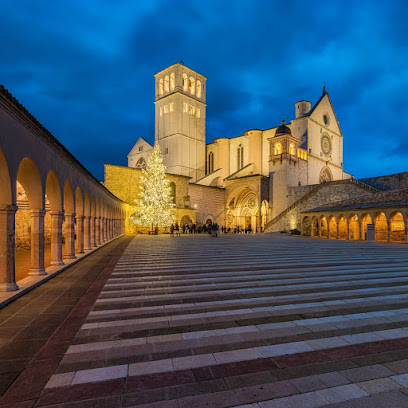
Basilica di Santa Maria degli Angeli
Discover the breathtaking Basilica di Santa Maria degli Angeli, a spiritual haven and remarkable architectural marvel in the heart of Italy.
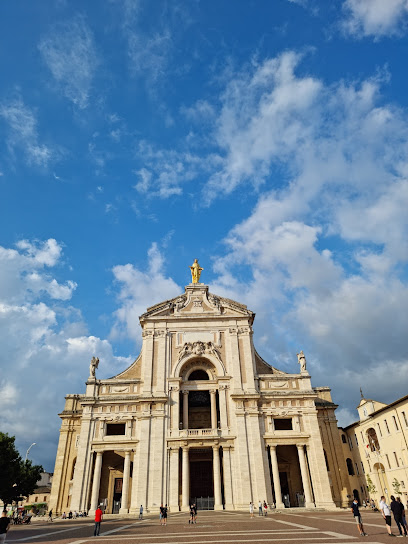
Basilica di Santa Chiara బాసిలికా డి సాన్టా చియారా
Explore the Basilica di Santa Chiara in Assisi, a stunning Gothic masterpiece dedicated to Saint Clare, rich in art, history, and spirituality.
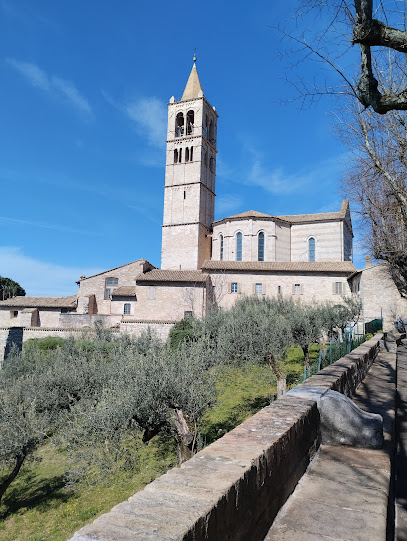
San Damiano
Discover the tranquil beauty of San Damiano, the historic sanctuary of Saint Francis in Assisi, Italy, a must-visit for spiritual seekers and nature lovers.
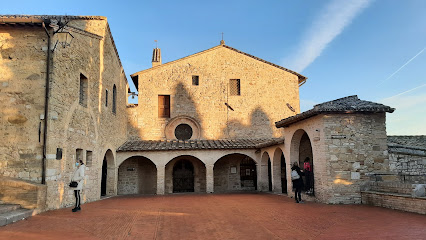
Eremo delle Carceri
Discover the serene beauty of Eremo delle Carceri, a historic shrine in Assisi offering peace, spirituality, and stunning natural landscapes.
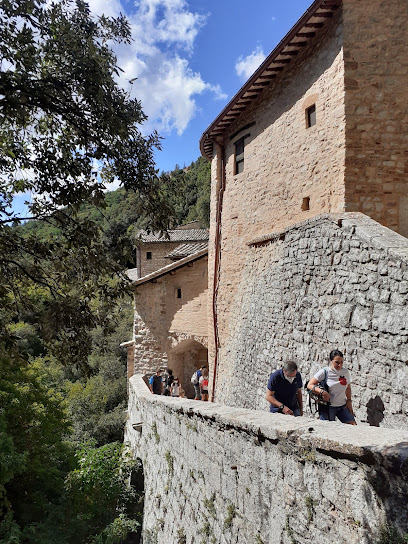
Cathedral of San Rufino
Discover the breathtaking Cathedral of San Rufino in Assisi, a historical masterpiece showcasing stunning Romanesque architecture and rich spiritual heritage.

Rocca Maggiore
Discover Rocca Maggiore, Assisi's majestic fortress offering breathtaking views and a rich historical experience in the heart of Umbria.
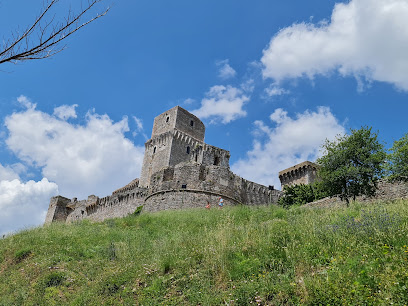
Mount Subasio
Experience the breathtaking beauty and tranquility of Mount Subasio, a natural park filled with stunning views, diverse wildlife, and rich history.
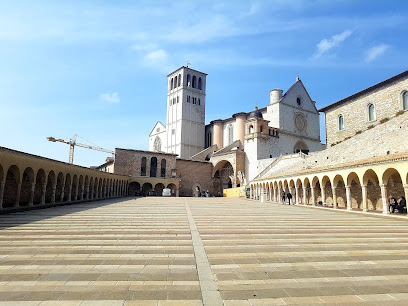
Piazza del Comune
Discover the enchanting Piazza del Comune in Assisi, a vibrant hub of history, architecture, and local culture surrounded by breathtaking medieval landmarks.
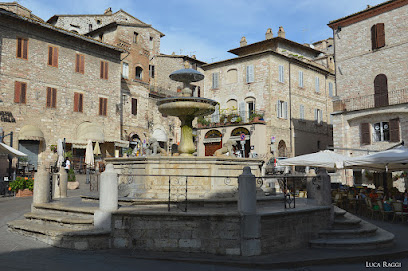
La piazzetta delle erbe
Experience authentic Italian cuisine at La Piazzetta delle Erbe in Assisi, where traditional flavors meet charming ambiance.

Bibenda Assisi Wine Tasting & Gourmet Food, Olive Oil and Chocolate Tastings
Experience the finest wine, gourmet food, olive oil, and chocolate tastings in the heart of Assisi at Bibenda.
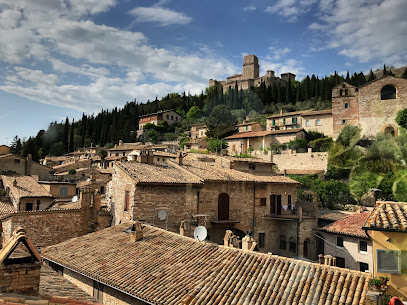
Le Terrazze di Properzio
Experience exquisite Italian dining with breathtaking views at Le Terrazze di Properzio in Assisi, a culinary must-visit for every traveler.
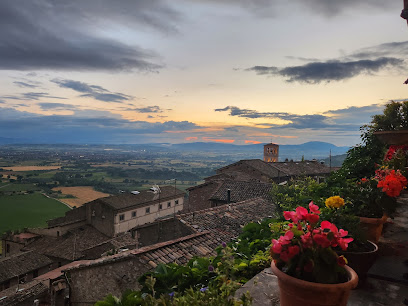
Bosco di San Francesco
Explore the tranquil beauty of Bosco di San Francesco, a historical park in Assisi, blending nature and heritage for an unforgettable experience.

Camping Fontemaggio Assisi
Discover the tranquility of Camping Fontemaggio in Assisi, where nature meets rich history in the heart of Italy.
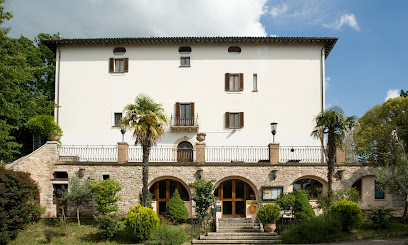
AssaggiAssisi
Discover authentic Italian flavors at AssaggiAssisi, a delightful deli in Assisi offering local cheeses, cured meats, and artisanal sandwiches.
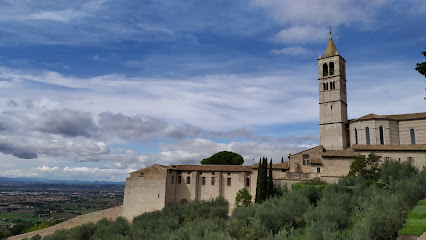
Unmissable attractions to see
Papal Basilica and Sacred Convent of Saint Francis in Assisi
Explore the awe-inspiring Papal Basilica of Saint Francis in Assisi, a UNESCO World Heritage site rich in history, art, and spirituality.
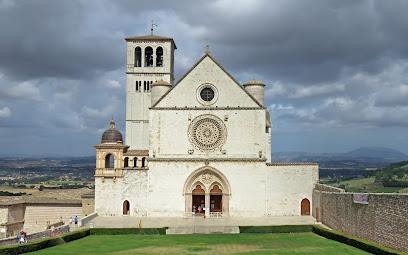
Basilica di Santa Maria degli Angeli
Explore the Basilica di Santa Maria degli Angeli, a stunning architectural wonder steeped in history and spiritual significance, located in the tranquil town of Santa Maria degli Angeli.
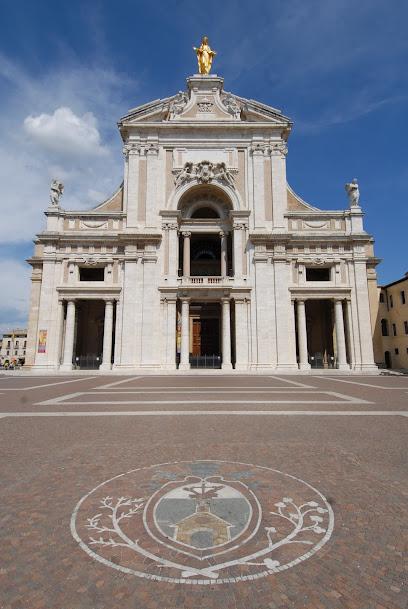
Piazza IV Novembre
Discover the enchanting Piazza IV Novembre in Perugia, a historical landmark filled with captivating architecture, culture, and vibrant local life.
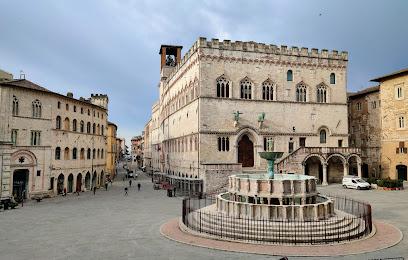
Basilica di Santa Chiara
Discover the architectural beauty and spiritual significance of Basilica di Santa Chiara in the heart of Assisi, a must-visit for every traveler.
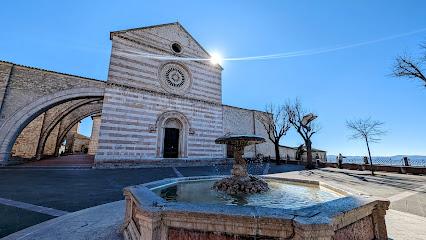
Rocca Paolina
Discover Rocca Paolina, a historical fortress in Perugia, Italy, blending rich heritage with stunning views and contemporary art.
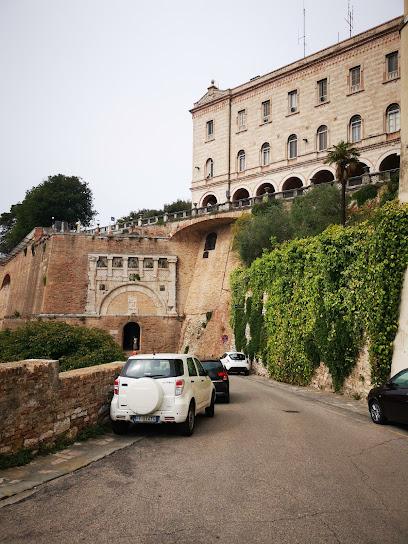
Fonti del Clitunno
Explore the tranquil beauty of Fonti del Clitunno, a stunning park with crystal-clear springs, rich history, and breathtaking landscapes in Campello sul Clitunno.
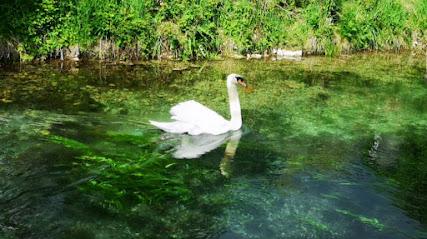
Spoleto Cathedral
Explore the enchanting Spoleto Cathedral, a stunning medieval gem in Umbria, featuring exquisite art and breathtaking views of the picturesque town.
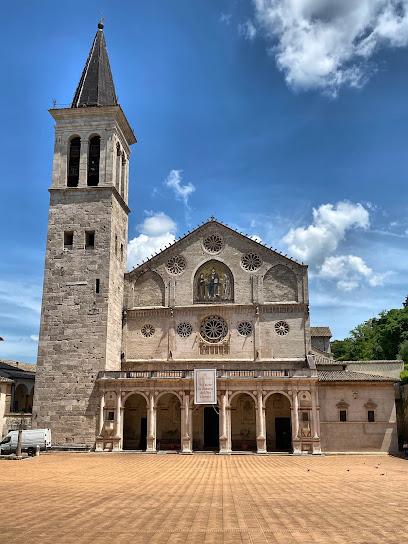
San Damiano
Discover the tranquil beauty and rich history of San Damiano, a spiritual sanctuary in Assisi where St. Francis found divine inspiration.
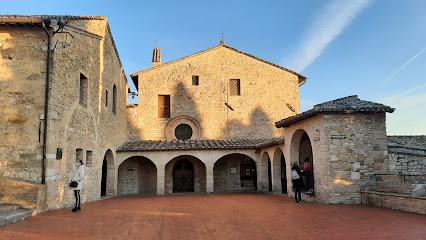
Eremo delle Carceri
Discover the spiritual tranquility of Eremo delle Carceri, a serene shrine in Assisi offering breathtaking views and rich Franciscan heritage.
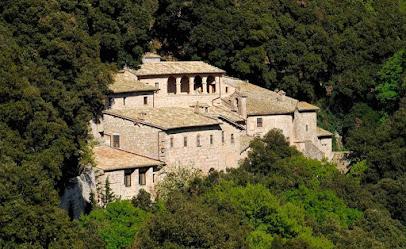
Cathedral of San Rufino
Discover the grandeur of the Cathedral of San Rufino in Assisi, a masterpiece of Romanesque architecture and a center of spiritual heritage.
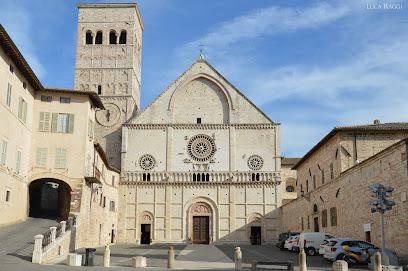
Basilica of Sant'Ubaldo, Gubbio
Experience the serene beauty and rich history of the Basilica of Sant'Ubaldo, a must-visit landmark in Gubbio, Italy, offering breathtaking views and spiritual solace.
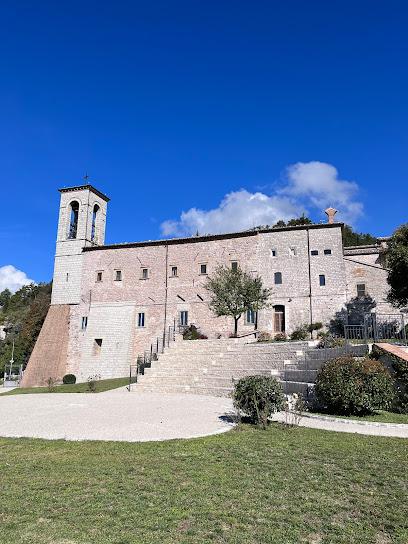
Rocca Maggiore
Experience the breathtaking views and rich history of Rocca Maggiore, a medieval fortress in Assisi, Italy.
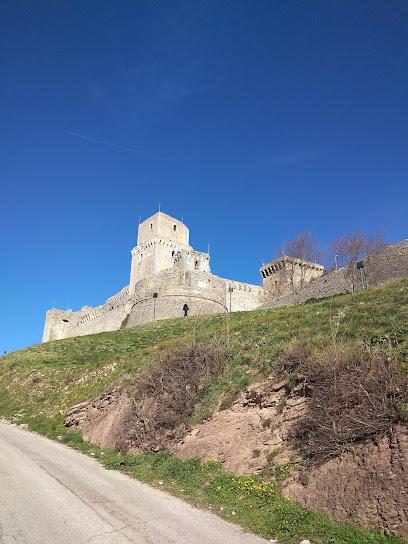
Piazza del Comune
Explore the vibrant Piazza del Comune in Assisi, where history, culture, and local charm converge in a stunning Italian setting.
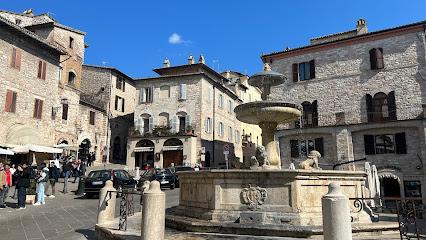
Mount Subasio
Explore Mount Subasio: A breathtaking natural park in Assisi, Italy, rich in wildlife, stunning views, and historical significance.
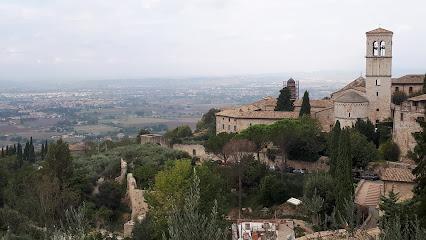
Piazza del Comune
Explore the vibrant atmosphere of Piazza del Comune in Assisi, where history, culture, and stunning architecture meet in Italy's enchanting heart.

Essential places to dine
Ristorante La Stalla
Experience authentic Italian cuisine at Ristorante La Stalla in Assisi - a perfect blend of local flavors and stunning views.
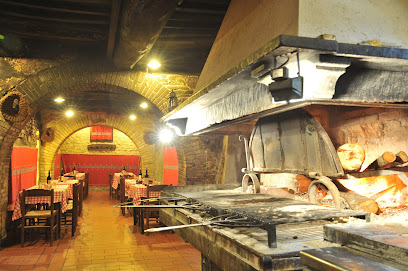
Ristorante Pizzeria Il Menestrello
Experience authentic Italian cuisine at Ristorante Pizzeria Il Menestrello in Assisi—delicious pizzas and traditional dishes await!
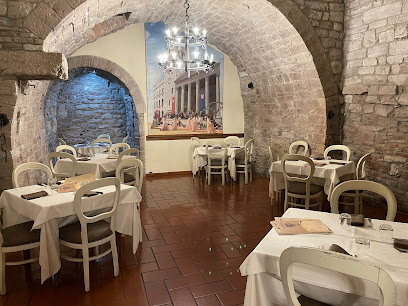
Trattoria Degli Umbri
Experience authentic Italian cuisine at Trattoria Degli Umbri in Assisi – where tradition meets taste in every bite.
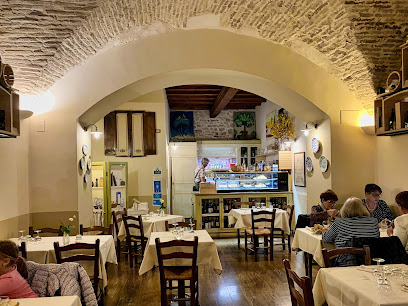
La Lanterna Ristorante Pizzeria
Experience authentic Italian flavors at La Lanterna Ristorante Pizzeria in Assisi - where every meal tells a story.
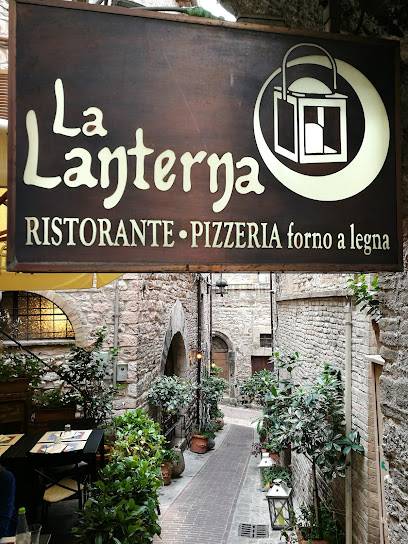
Trattoria Pallotta Assisi
Savor authentic Italian flavors at Trattoria Pallotta in Assisi—where every dish tells a story.
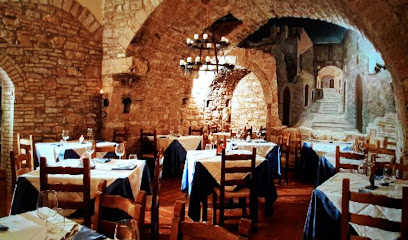
La piazzetta delle erbe
Discover authentic Italian cuisine at La Piazzetta delle Erbe in Assisi, where tradition meets flavor in every delightful dish.
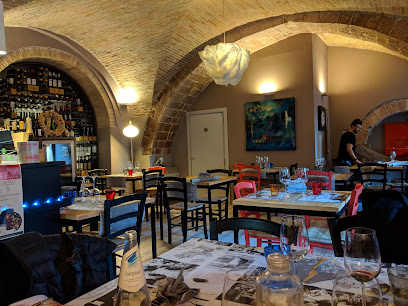
Le Terrazze di Properzio
Discover Le Terrazze di Properzio: where exquisite Italian cuisine meets breathtaking views in the heart of Assisi.
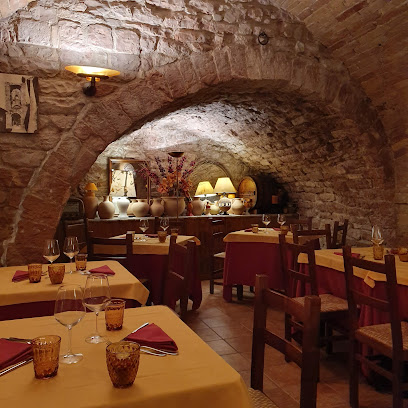
Trattoria Da Erminio
Experience authentic Italian cuisine at Trattoria Da Erminio in Assisi - where every dish tells a story!
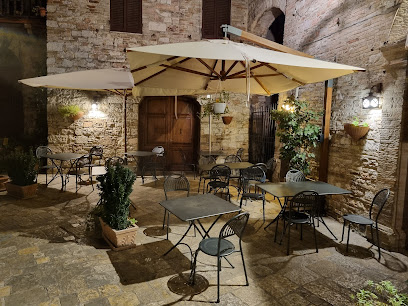
Il Baccanale
Experience exquisite cuisine and artistic ambiance at Il Baccanale in Assisi – where culinary tradition meets creative expression.
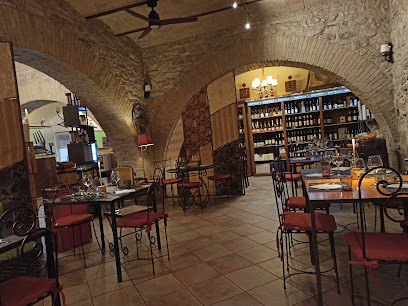
Hostaria Terra Chiama
Experience authentic Italian cuisine at Hostaria Terra Chiama in Assisi—where tradition meets flavor in every dish.
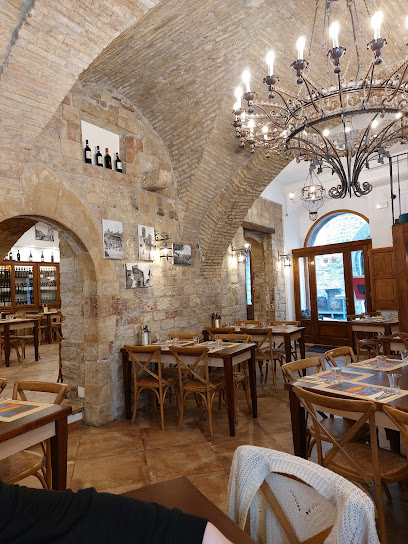
Ristorante Pizzeria I Monaci
Experience authentic Italian dining at Ristorante Pizzeria I Monaci in Assisi – where every meal is a celebration of flavor.
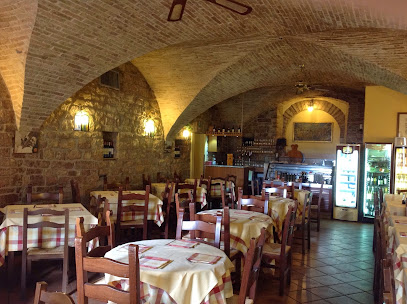
Ristorante Buca di San Francesco - ASSISI
Experience authentic Italian cuisine at Ristorante Buca di San Francesco in Assisi - a culinary gem nestled in the heart of Italy's historic landscape.
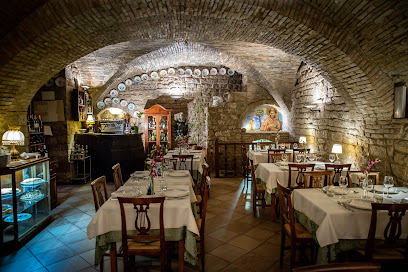
Ristorante il Vicoletto
Experience authentic Italian cuisine at Ristorante il Vicoletto in Assisi—where tradition meets taste in every dish.
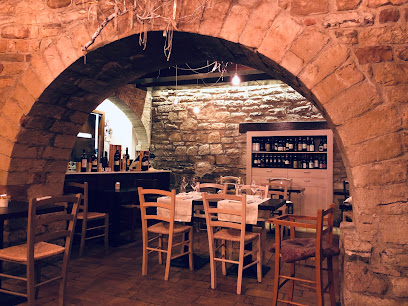
Ristorante degli Orti
Experience authentic Italian cuisine with stunning views at Ristorante degli Orti in Assisi – where every meal is a celebration.
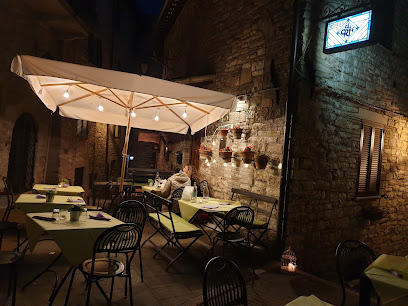
Ristorante Bar San Francesco
Experience authentic Italian cuisine at Ristorante Bar San Francesco in Assisi - where every dish tells a story.
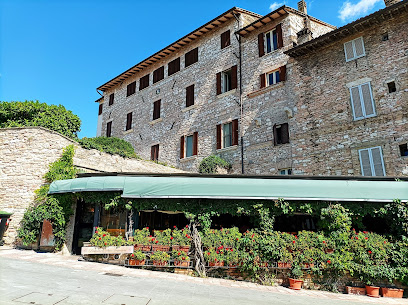
Markets, malls and hidden boutiques
Assisi Jewels
Discover unique handcrafted jewelry at Assisi Jewels, where artistry meets tradition in the heart of Assisi, Italy.
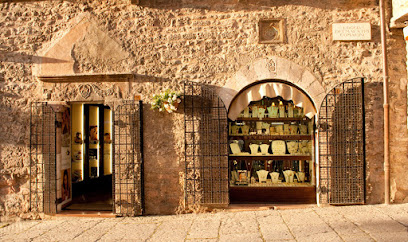
HUMILIS Made in Assisi (Boutique Assisi S. Francesco)
Explore exquisite handcrafted jewelry at HUMILIS Made in Assisi, where tradition meets modern elegance in the heart of Italy's historic town.
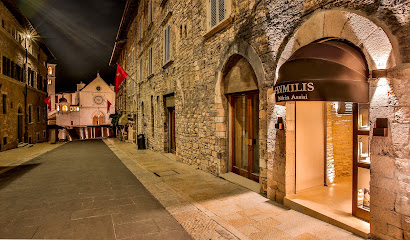
Negozio Il Lavandeto Di Assisi Via Portica 16
Explore Negozio Il Lavandeto in Assisi for artisanal crafts, unique collectibles, and authentic souvenirs reflecting rich Italian culture.
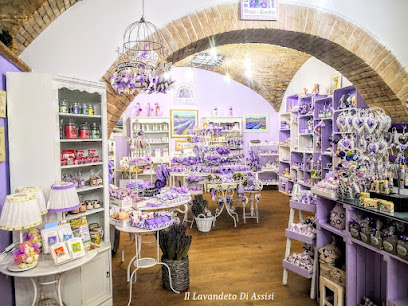
Gambacorta, Bottega del Bongustaio, dal 1946
Explore the rich flavors of Italy at Gambacorta, Bottega del Bongustaio in Assisi, a must-visit for gourmet treats and local delicacies.
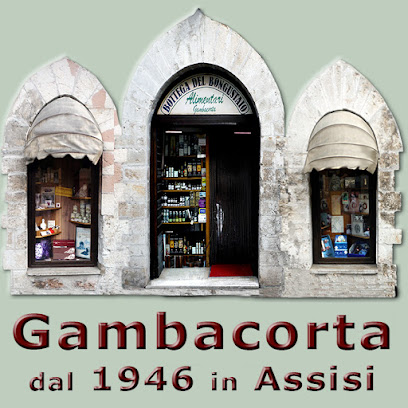
D'Olivo
Explore the artisan treasures of D'Olivo in Assisi, where craftsmanship meets culture in every unique handmade product.
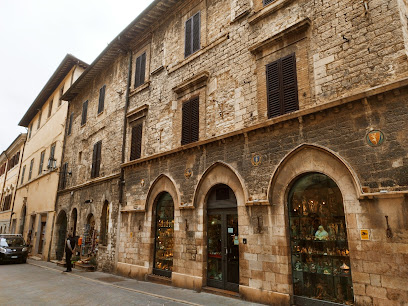
Art Leather srls
Discover exquisite handmade leather goods at Art Leather in Assisi, where Italian craftsmanship meets timeless style.
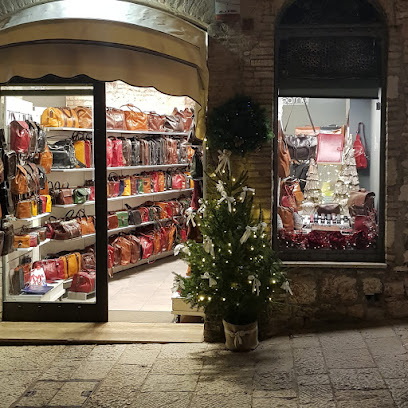
Carla Assisi
Discover the artistry of Assisi at Carla Assisi, where handcrafted treasures meet the charm of Italian craftsmanship.

Michelangelo Assisi
Explore Michelangelo Assisi for exquisite handicrafts, handmade leather goods, and unique pottery, reflecting the rich artistry of Italy.

TUUM STORE ASSISI
Explore the exquisite handcrafted jewelry of TUUM Store in Assisi, celebrating Italy's rich artistic heritage and craftsmanship.
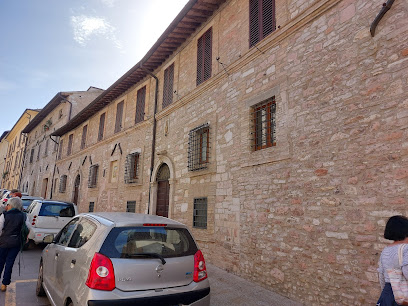
Il Sole Souvenirs
Discover the spiritual and artistic essence of Assisi at Il Sole Souvenirs, where unique religious goods and local crafts await your exploration.
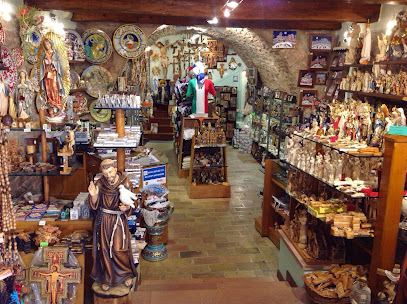
Margherita Boutique
Explore Margherita Boutique in Assisi for unique fashion and artisanal crafts reflecting Italy's rich cultural heritage.
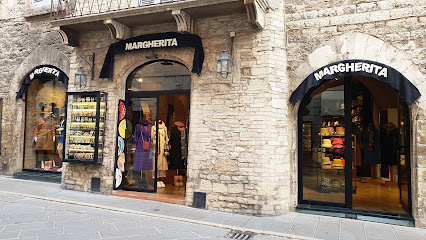
I Tre Archi
Discover unique handcrafted gifts and stunning furniture at I Tre Archi in Assisi, the perfect spot for memorable souvenirs and local artistry.
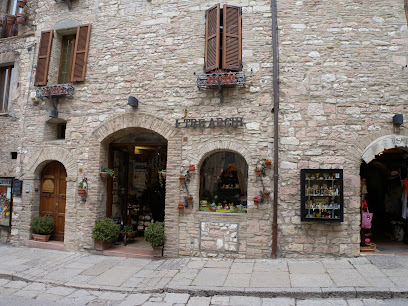
Assisi Souvenir
Explore Assisi Souvenir for unique Italian crafts, clothing, and local delicacies that capture the spirit of Italy.

Berti Assisi - Oggettistica da regalo
Discover unique collectibles and handcrafted gifts at Berti Assisi, a charming shop in the heart of Assisi, perfect for any traveler seeking authentic souvenirs.
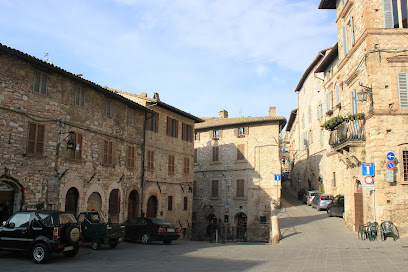
Spadini Barbara e Stefano & C
Discover unique Italian fashion at Spadini Barbara e Stefano & C, a charming boutique in Assisi offering stylish clothing and accessories.
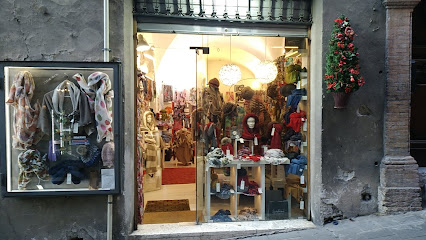
Essential bars & hidden hideouts
Bibenda Assisi Wine Tasting & Gourmet Food, Olive Oil and Chocolate Tastings
Discover the exquisite wines and gourmet flavors of Italy at Bibenda Assisi, a must-visit wine bar in the heart of Assisi.
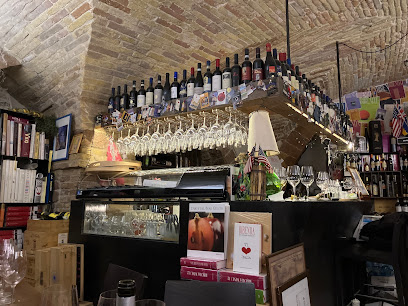
Hostaria Terra Chiama
Discover the flavors of Italy at Hostaria Terra Chiama, Assisi's beloved traditional restaurant and wine bar.
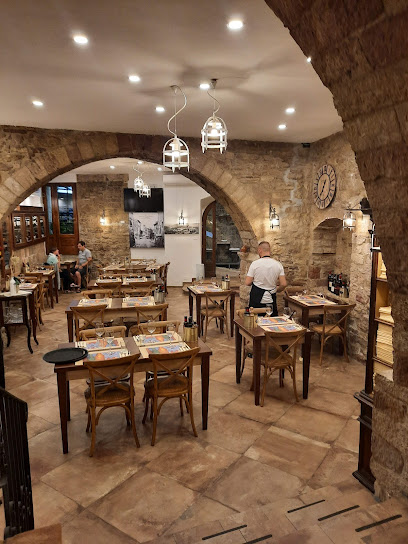
Ristorante Bar San Francesco
Experience authentic Italian cuisine at Ristorante Bar San Francesco in Assisi, where every meal is a delightful journey through Italy's culinary traditions.
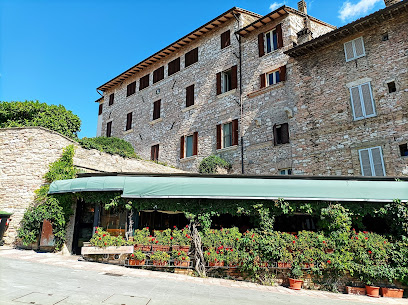
Enoteca Mazzini
Experience authentic Italian cuisine and exquisite local wines at Enoteca Mazzini in Assisi, a culinary highlight for every traveler.
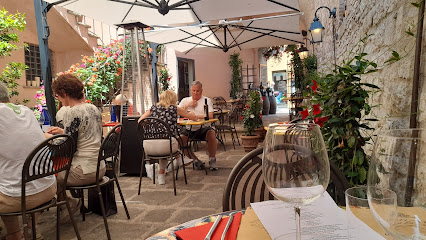
Gran Caffè
Experience the elegance of Italian café culture at Gran Caffè in Assisi, where premium coffee and exquisite pastries await.
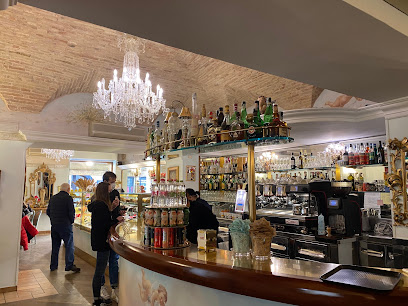
Le Delizie del Subasio
Discover authentic Italian cuisine and local wines at Le Delizie del Subasio, a culinary gem in the heart of Assisi.
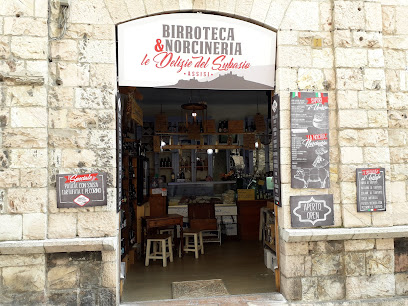
Bar Giardino San Lorenzo
Explore the rich flavors of Italy at Bar Giardino San Lorenzo, a cozy espresso bar in Assisi offering authentic coffee and local delicacies.
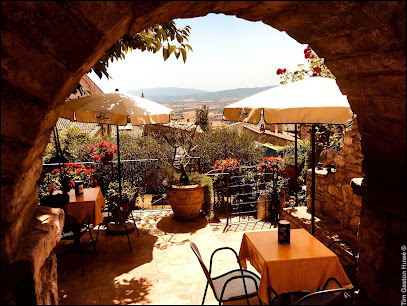
Caffè Duomo ASSISI
Experience the vibrant culture of Assisi at Caffè Duomo, your go-to bar for authentic Italian coffee and pastries near San Rufino Cathedral.
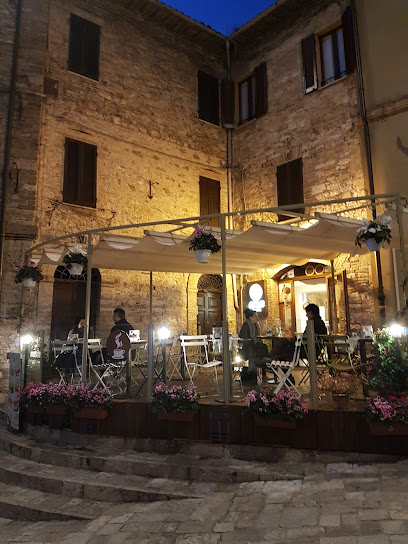
Bar La Piazzetta Di Agnese
Discover the charm of Assisi at Bar La Piazzetta Di Agnese, where local flavors meet stunning views in a cozy atmosphere.
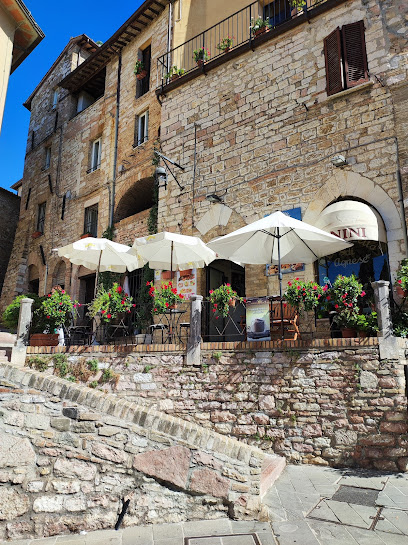
Bar Trovellesi
Experience the sweetness of Assisi at Bar Trovellesi, your go-to spot for cakes, chocolates, and ice cream in the heart of Italy's historic town.
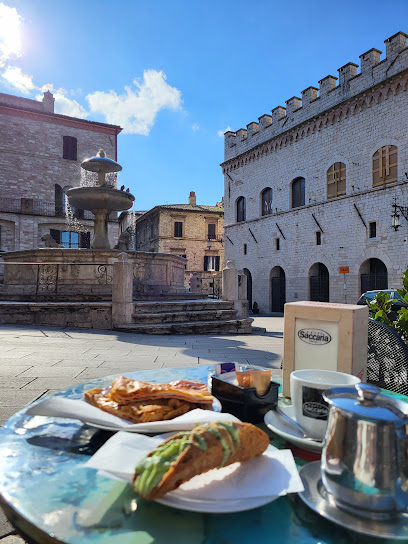
Wine Assisi Tesori dell’Umbria
Discover the exquisite Umbrian wines and local delicacies at Wine Assisi Tesori dell’Umbria, a haven for wine lovers in the heart of Assisi.

Bar La Piazzetta Di Mariani Carlo E C. Sas
Discover the charming Bar La Piazzetta in Assisi, where locals gather for delightful coffee and light bites in a cozy setting.
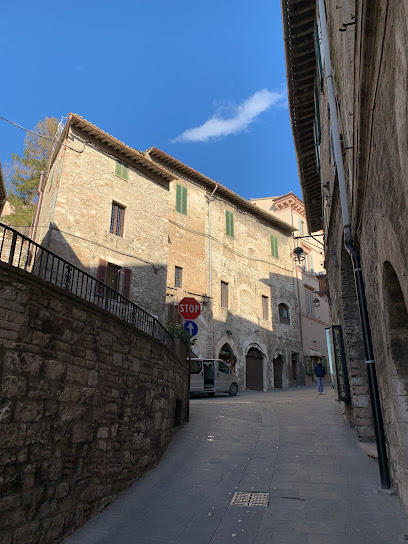
Bar Pettirossi Carlo
Discover the charm of Assisi at Bar Pettirossi Carlo, where delightful beverages and warm hospitality await every visitor.
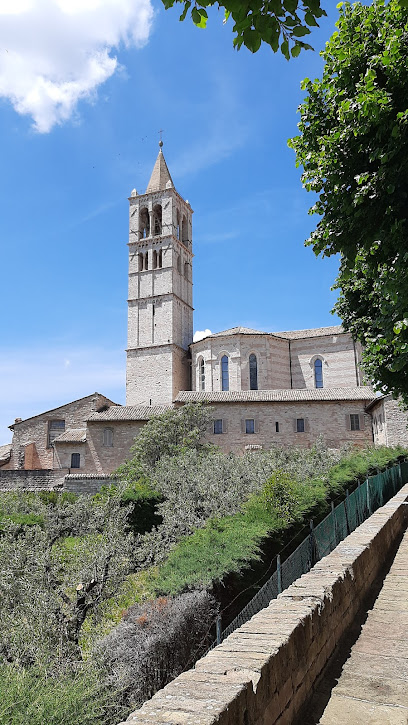
Bar Maestri Comacini
Experience the authentic vibes of Assisi at Bar Maestri Comacini, where local drinks and a cozy atmosphere await every visitor.
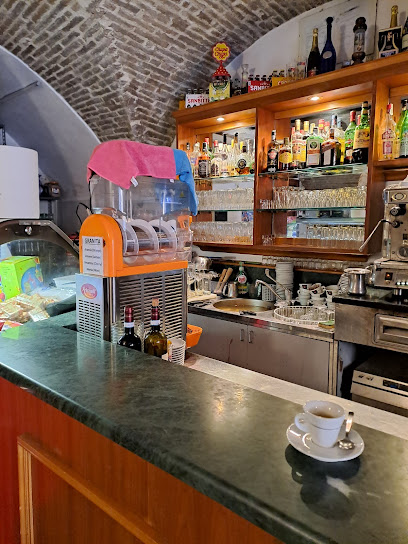
Nun Bar
Experience the flavors of Assisi at Nun Bar, where local cuisine meets exceptional service in a cozy atmosphere.
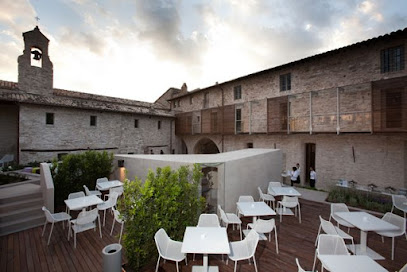
Travel experiences inspired by this city
Explore more travel diariesLocal Phrases
-
- HelloCiao
[chow] - GoodbyeArrivederci
[ah-ree-veh-DEHR-chee] - YesSì
[see] - NoNo
[noh] - Please/You're welcomePer favore
[pehr fah-VOH-reh] - Thank youGrazie
[GRAH-tsyeh] - Excuse me/SorryMi scusi
[mee SKOO-zee] - How are you?Come stai?
[KOH-meh stai] - Fine. And you?Bene. E tu?
[BEH-neh. Ay too] - Do you speak English?Parli inglese?
[PAHR-lee een-GLAY-zeh] - I don't understandNon capisco
[nohn kah-PEES-koh]
- HelloCiao
-
- I'd like to see the menu, pleaseVorrei vedere il menu, per favore
[vohr-RAY veh-DEH-reh eel MEH-noo, pehr fah-VOH-reh] - I don't eat meatNon mangio carne
[nohn MAHN-joh KAR-neh] - Cheers!Salute!
[sah-LOO-teh] - I would like to pay, pleaseVorrei pagare, per favore
[vohr-RAY pah-GAH-reh, pehr fah-VOH-reh]
- I'd like to see the menu, pleaseVorrei vedere il menu, per favore
-
- Help!Aiuto!
[ah-YOO-toh] - Go away!Vai via!
[vy VEE-ah] - Call the Police!Chiama la polizia!
[KYAH-mah lah poh-LEE-tsyah] - Call a doctor!Chiama un dottore!
[KYAH-mah oon doh-TOH-reh] - I'm lostMi sono perso
[mee SOH-noh PEHR-soh] - I'm illSto male
[stoh MAH-leh]
- Help!Aiuto!
-
- I'd like to buy...Vorrei comprare...
[vohr-RAY kohm-PRah-reh] - I'm just lookingSto solo guardando
[stoh SOH-loh gwar-DAHN-doh] - How much is it?Quanto costa?
[KWAHN-toh KOH-stah] - That's too expensiveÈ troppo caro
[eh TROH-poh KAH-roh] - Can you lower the price?Puoi abbassare il prezzo?
[PWoh-ee ahb-bah-SAH-reh eel PREH-tsoh]
- I'd like to buy...Vorrei comprare...
-
- What time is it?Che ora è?
[keh OH-rah eh] - It's one o'clockÈ l'una
[eh LOO-nah] - Half past (10)Sono le dieci e mezza
[SOH-noh leh dyeh-chee eh MEH-tzah] - MorningMattina
[maht-TEE-nah] - AfternoonPomeriggio
[poh-meh-REE-joh] - EveningSera
[SEH-rah] - YesterdayIeri
[YEH-ree] - TodayOggi
[OH-jee] - TomorrowDomani
[doh-MAH-nee] - 1Uno
[OO-noh] - 2Due
[DOO-eh] - 3Tre
[TREH] - 4Quattro
[KWAH-troh] - 5Cinque
[CHEEN-kweh] - 6Sei
[say] - 7Sette
[SEH-teh] - 8Otto
[OH-toh] - 9Nove
[NOH-veh] - 10Dieci
[DYEH-chee]
- What time is it?Che ora è?
-
- Where's a/the...?Dov'è...?
[doh-VEH] - What's the address?Qual è l'indirizzo?
[kwahl eh leen-DEER-eet-zoh] - Can you show me (on the map)?Puoi mostrarmi (sulla mappa)?
[PWoh-ee mohs-TRAHR-mee SOOL-lah MAHP-pah] - When's the next (bus)?Quando è il prossimo (autobus)?
[KWAHN-doh eh eel PROHS-sih-moh ow-TOH-boos] - A ticket (to ....)Un biglietto (per ....)
[oon bee-LYET-toh pehr]
- Where's a/the...?Dov'è...?
History of Assisi
-
Assisi, located in the Umbria region of Italy, has origins dating back to the Umbri tribes around 1000 BCE. By the 4th century BCE, it became a flourishing Roman town known as Asisium. Roman influences are still visible today in structures like the Temple of Minerva and remnants of Roman walls.
-
The medieval period was a transformative era for Assisi, especially with the birth of St. Francis in 1181/1182. He founded the Franciscan Order, which had a profound impact on Christianity and the town itself. The Basilica of San Francesco, completed in 1253, is a UNESCO World Heritage Site and a major pilgrimage destination.
-
In 1198, Assisi suffered a significant defeat in the Battle of Collestrada against the Perugians. St. Francis, then a young man, was captured and imprisoned for a year. This event was pivotal in his spiritual transformation and subsequent founding of the Franciscan Order.
-
During the Renaissance, Assisi became a hub for artistic and architectural innovation. The town is home to masterpieces by renowned artists like Giotto, Cimabue, and Pietro Lorenzetti, particularly within the Basilica of San Francesco. These works have contributed significantly to Western art history.
-
Assisi has preserved its historical and cultural heritage through various restorations and preservation efforts. It remains a vibrant town that attracts millions of visitors annually. Modern Assisi balances its rich history with contemporary cultural events, such as the annual Calendimaggio festival, which celebrates medieval and Renaissance traditions.
Assisi Essentials
-
Assisi is located in the Umbria region of Italy. The nearest major airport is Perugia San Francesco d'Assisi – Umbria International Airport, about 12 kilometers away. From the airport, you can take a taxi, rent a car, or use the bus service to reach Assisi. Alternatively, you can fly into Rome's Fiumicino Airport or Florence's Peretola Airport and take a train to Assisi. Direct train services are available from both cities, with the journey from Rome taking approximately two hours and from Florence about two and a half hours.
-
Assisi is a small town and most of its attractions are within walking distance. For longer distances, local buses and taxis are available. The main bus station is located near the train station, making it convenient to transfer between different modes of transport. Renting a car is also an option if you wish to explore the surrounding Umbrian countryside. However, be aware that parking in the historic center can be limited and expensive.
-
The official currency in Italy is the Euro (EUR). Credit cards are widely accepted in hotels, restaurants, and shops in Assisi. However, it is advisable to carry some cash, especially for small purchases or in smaller establishments that may not accept cards. ATMs are readily available in the town center, and most banks offer currency exchange services.
-
Assisi is generally a safe destination for tourists. Violent crime is rare, but petty crime such as pickpocketing can occur, particularly in crowded areas and tourist hotspots. It is advisable to keep an eye on your belongings and avoid carrying large sums of cash. There are no specific high-crime areas in Assisi targeting tourists, but standard precautions should always be taken.
-
In case of an emergency, dial 112 for immediate assistance. This number connects you to the police, fire department, and medical emergency services. The local hospital, Ospedale di Assisi, is equipped to handle most medical situations. Pharmacies are available for minor health issues, and many have English-speaking staff. It is recommended to have travel insurance that covers medical emergencies.
-
Fashion: Do dress modestly, especially when visiting religious sites. Avoid wearing revealing clothing. Religion: Do respect local customs and traditions. Always cover your shoulders and knees when entering churches and religious sites. Public Transport: Do be respectful and give up your seat to elderly passengers. Don't eat or drink on public transport. Greetings: Do greet people with a polite 'Buongiorno' (Good morning) or 'Buonasera' (Good evening). A handshake is a common form of greeting. Eating & Drinking: Do try local delicacies and accept food offerings graciously. Don't rush your meals; Italians appreciate leisurely dining.
-
To experience Assisi like a local, visit the town's weekly market held on Saturdays in Piazza del Comune, where you can buy fresh produce and local goods. Engage with the locals, as they are often friendly and willing to share stories about the town's history and culture. Don't miss the opportunity to attend a local festival or event, such as the Calendimaggio in May, which celebrates the arrival of spring with medieval reenactments and parades. For a unique experience, take a walk along the ancient Roman aqueduct path, offering stunning views of the surrounding landscapes.
Trending Landmark in Assisi
-
Basilica of Saint Francis of Assisi
-
Basilica di Santa Maria degli Angeli
-
Basilica di Santa Chiara బాసిలికా డి సాన్టా చియారా
-
San Damiano
-
Eremo delle Carceri
-
Cathedral of San Rufino
-
Rocca Maggiore
-
Mount Subasio
-
Piazza del Comune
-
La piazzetta delle erbe
-
Bibenda Assisi Wine Tasting & Gourmet Food, Olive Oil and Chocolate Tastings
-
Le Terrazze di Properzio
-
Bosco di San Francesco
-
Camping Fontemaggio Assisi
-
AssaggiAssisi
Nearby Cities to Assisi
-
Things To Do in Perugia
-
Things To Do in Orvieto
-
Things To Do in Montepulciano
-
Things To Do in Urbino
-
Things To Do in Arezzo
-
Things To Do in Montegiardino
-
Things To Do in Fiorentino
-
Things To Do in Chiesanuova
-
Things To Do in Faetano
-
Things To Do in San Marino
-
Things To Do in Domagnano
-
Things To Do in Acquaviva
-
Things To Do in Borgo Maggiore
-
Things To Do in Serravalle
-
Things To Do in Siena











